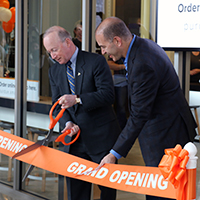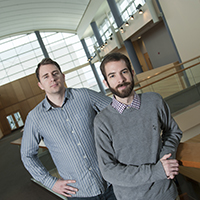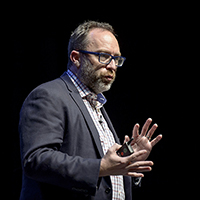The Working Dead
‘Presenteeism’ lowers productivity, spreads illness
It’s a real-life zombie apocalypse — sick employees drag themselves into work, where they are sluggish, inefficient and infectious. These workplace zombies can lower workplace productivity for weeks, especially during cold and flu season.
Krannert faculty member Ellen Kossek, who serves as Purdue’s Basil S. Turner Professor of Management and research director at the Susan Bulkeley Butler Center for Leadership Excellence, studies this all-too-familiar phenomenon.
"It’s called presenteeism," Kossek says. "It means an ill worker shows up on the job, is visibly there, but is not productive. And that person can easily be spreading sickness." Factors that lead to presenteeism include an understaffed workplace; lack of cross training among employees; an office or shop where “being seen” measures productivity; and stigma or penalties for workers who attend to personal or family needs.
On the other hand, Kossek says, “Studies show that when people feel they have control over their time, they experience a higher sense of well-being, are less depressed and work better.”
To combat the syndrome, Kossek suggests that employers adopt a few simple policies to keep their workforce healthy and productive. Each employee should have a backup who knows how to do the same job, she says. If it's technologically possible, an employee who is ill or has a sick child should also be allowed to work from home. "That way the employee gets some work done and doesn't infect other workers,” she says.
Obviously, providing employee sick leave is another way to alleviate the problem. There are no federal laws requiring employers to provide paid sick leave. And in the U.S., 50 percent of workers are not covered by the Family Medical Leave Act (FMLA). Those not covered are more likely to be part-time and low-wage workers, Kossek says.
Nevertheless, she says, smart companies are starting to rethink the concept of sick leave. Instead of considering it an expensive entitlement, many now view it as social insurance for employees — something workers may or may not use.
More and more employers view paid leave as an investment in human capital. “They see it as another cost of doing business. Oftentimes, it is a decision a company makes when it’s aiming to be an ‘employer of choice,’” she says, noting that organizations like Wal-Mart are starting to appreciate the long-term value of providing better benefits to its employees.
Kossek looks forward to a time when the flexible workplace is the norm, not the exception. She reminds people that in today’s hyperconnected environment, a worker’s physical, mental and even family health are intrinsically linked with their employer. Employees and company leaders need training to manage work-life boundaries for both personal and business health.






